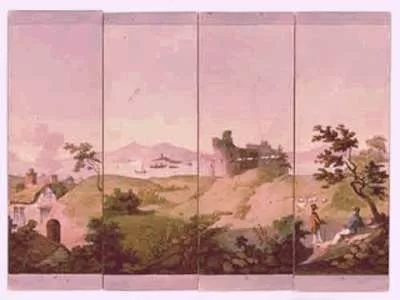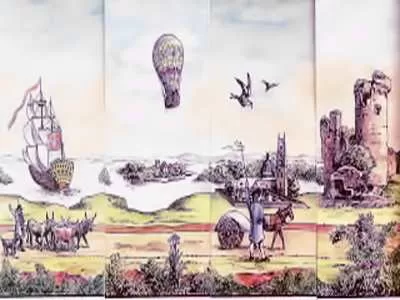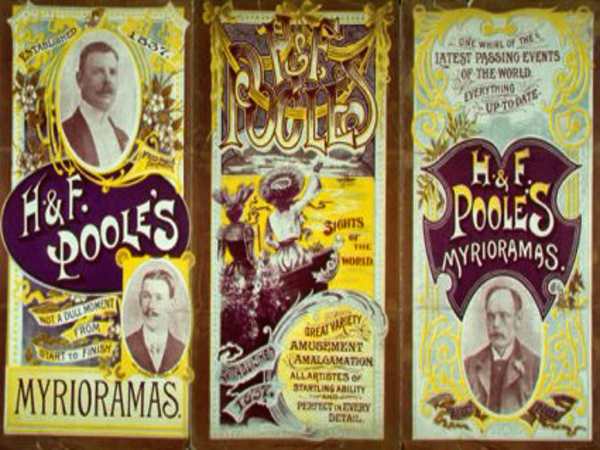Imagine a world where a single box could unlock endless landscapes. In the early 19th century, the myriorama wasn’t just a toy, it was a portal to adventure. Let’s embark on a journey through the fascinating history of this ingenious invention, exploring its connection to the moving panorama, Victorian tourism, and even a famous literary reference!
The Moving Panorama: A Grand Spectacle
Before the myriorama, there was the moving panorama. These massive, hand-painted scrolls, unfurled with dramatic flourishes, enthralled audiences with panoramic views of everything from cityscapes to battles. The moving panorama was a precursor to cinema, offering a thrilling glimpse of faraway lands and historical events.

The Myriorama Emerges: Endless Landscapes Made Easy
Inspired by the moving panorama, John Clarke, a Londoner with an eye for innovation, introduced the myriorama in 1824. Unlike the bulky panoramas, the myriorama was compact and portable. It comprised a set of interchangeable cards, each featuring a different landscape element – a quaint cottage, a bustling market, or a majestic mountain range.
A Toybox Treasure and a Tourist Souvenir:
The myriorama wasn’t just for entertainment; it was a miniature travelogue. Smaller versions, like the “Panoramacopianor Endless Landscape Scenery of the Isle of Wight,” showcased specific tourist destinations, enticing viewers to explore these new frontiers.
Infinite Combinations: A Universe in a Box
The magic of the myriorama lay in its versatility. By rearranging the cards, you could create an endless number of scenic combinations. Some sets boasted millions of possible variations, a staggering number for the time. Imagine the excitement of a child (or an adult!) with the power to conjure new landscapes at their fingertips.

A Literary Brushstroke: Molly Bloom and the Myriorama
The myriorama’s cultural impact extended beyond toyshops. James Joyce, in his masterpiece “Ulysses,” mentions Molly Bloom encountering her soon-to-be-husband Leopold Bloom at Poole’s Myriorama, hinting at the popularity of these visual delights in Victorian society.
From Tourist Trap to Modern Revival:
While cinema eventually overshadowed the moving panorama and the myriorama, there’s a renewed interest in these historical toys. Today, vintage toy stores and online retailers offer modern interpretations of the myriorama, allowing a new generation to experience the joy of creating endless landscapes.
The Myriorama’s Legacy: A Spark of Imagination
The myriorama’s story is more than just a historical footnote. It’s a testament to human ingenuity and our enduring fascination with creating our own realities.

